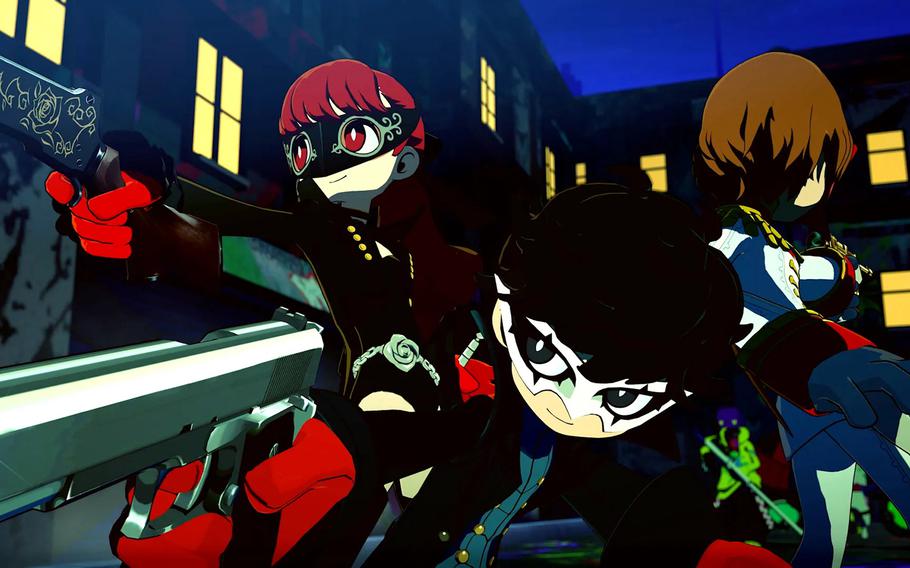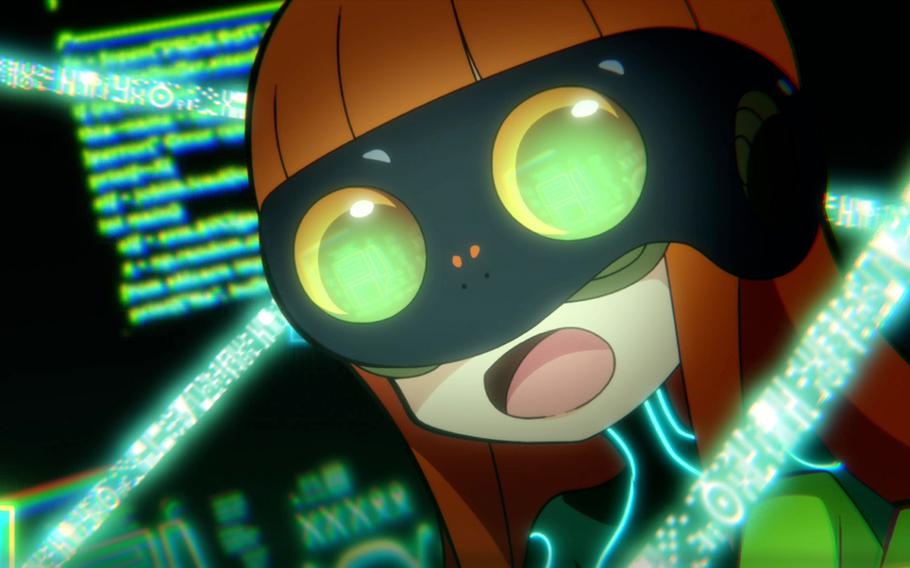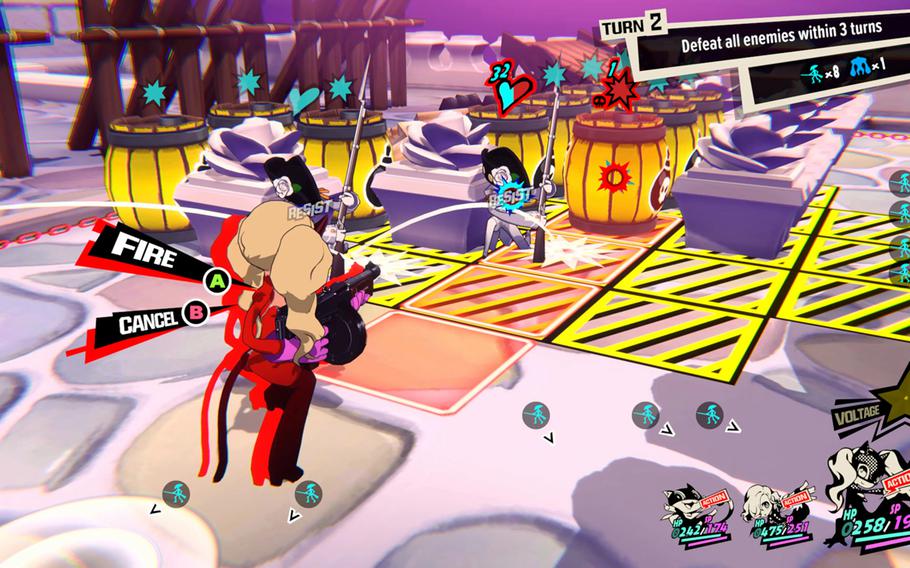
Persona 5 Tactica has a different art style from the original but it maintains the game’s feel. (Atlus/TNS)
Japan releases plenty of role-playing games, but few have the staying power of Persona 5. Although this entry to the long-running series is 7 years old, fans can’t get enough of Joker and the other Phantom Thieves. The title has spawned several spin-offs including several anime series, a rhythm game and an action RPG.
Now, some of the original developers from P-Studio are adapting the gameplay to a new genre. As the name implies, Persona 5 Tactica takes the characters and elements and meshes them into a turn-based strategy game. It’s more like Fire Emblem or Mario + Rabbids than a conventional Japanese RPG.
In this entry, Joker and the Phantom Thieves find themselves unexpectedly transported to a mysterious kingdom that appears straight out of 18th-century France. It’s ruled by a maniacal dictator named Marie, who charms Joker’s friends and turns them into her loyal minions. Just as Joker is about to suffer the same fate, a freedom fighter named Erina rescues him and Morgana.
The first few missions teach players the basics as Tactica allows players to control teams of three. Squad members have to outmaneuver enemies, take cover and use their combat abilities to summon Persona, as well as fire ranged weapons and physically assault up-close. As in similar titles, it’s about attacking without leaving openings.

Futaba plays her familiar role as a support character who isn’t on the battlefield but helps her teammates regardless in Persona 5 Tactica. (Atlus/TNS)
Teaching strategy
P-Studio does a good job of introducing the foundation and layering in more complex systems. About halfway through more than 60 missions, players will have most of the mechanics down. The key to winning battles is to knock down enemies, leaving them vulnerable, which unlocks the Triple Threat all-out attack, where all squadmates combine their attack powers to eliminate enemies. The rub is that it’s only effective in a triangular area bounded by the party members and the downed foe.
That means positioning is even more important to success. It allows a squad to efficiently eliminate foes. Knocking down adversaries also grants a Phantom Thief an additional move during the turn, allowing the character to cause more havoc or set up another move. If players see no opportunity to attack, they can also wait their turn, which charges their abilities for the next turn.
The gameplay can overwhelm novices to this style of strategy game, but Tactica offers side quests that do a great job of hammering home critical lessons and potential for each move. They teach players how to set up turns so that one character can tear throw several enemies in one go. It show off the Follow-up technique, which activates if a teammate from a higher elevation knocks a foe to the ground. That triggers a teammate to shoot the enemy as it falls dealing more damage.
Character building and progression
The other half of Tactica is leveling up the heroes, and that requires the titular entities. Because this world works differently from the Metaverses they’re used to, the Phantom Thieves find that they have one Persona to call, but they can equip Sub-Personas that boost stats and have unique abilities and properties. The strength of the Persona is limited by the collective level of the group. It essentially acts as a way to stop players from equipping powerful entities to breeze through the campaign.
Players will begin with weak Personas and they’ll have to fuse them together to create more powerful entities. They earn more Personas as they complete missions. Part of the time-consuming fun is figuring out the best combinations to fuse. If done right, they accentuate a Phantom Thief’s role in the squad while also providing valuable bonuses so they can finish a difficult mission or quest.
Not only can Personas be used as summons and equipment, but they’re also added to weapons. They’re key to obtaining some of the more powerful ranged weapons in the campaign.

Panther is going to destroy explosive barrels that could give her an advantage on the battlefield in Persona 5 Tactica. (Atlus/TNS)
A quick pace bogged down
Players will need all these advantages because Tactica can be difficult on higher difficulties. Seasoned strategy veterans won’t have problems and they’ll appreciate the quick pace of the missions.
Most won’t drag on beyond 17 turns, and the map design offers enough complexities, especially in the later kingdoms to force players to try new strategies and characters. Players will encounter levels with multiple doors and switches, strict time limits or other scenarios that will cause players to rethink their approach. (Tactica is great because it lets players easily re-spec their characters letting them experiment with different builds.)
The only thing that slows the campaign’s brisk pace is the actual storytelling. The missions are a blast, but the narrative between them isn’t as dynamic. It builds a compelling mystery as players delve into why the kingdoms are so different from the Metaverse palaces from the original. A lot of the spotlight focuses on Toshiro Kasukabe, a missing member of Japan’s Legislature, who comes off as arrogant and weak. As players dig into his history, he becomes a more complex character.
The slow pace highlights a problem: P-Studio interjects too many characters who bog down the plot points with excessive dialogue. Tactica continues the story of the Phantom Thieves, but because they’re established and don’t change much, they aren’t the interesting parts of the campaign. This spin-off is more about Toshiro and the freedom fighter Erina and if the campaign could focus more on them it would have been a better experience.
Platforms: Xbox Series X and Series S, Xbox One, PlayStation 5, PlayStation 4, PC, Nintendo Switch
Online: persona.atlus.com/p5t